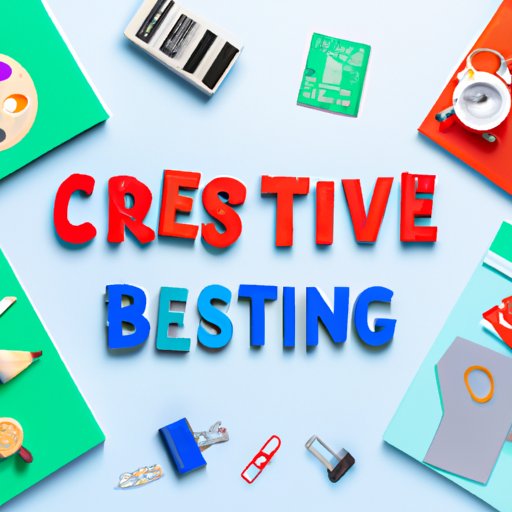I. Introduction
A creative brief is a document that outlines the essential elements of a project and acts as a roadmap for its development. It is a tool for communication and collaboration between team members and ensures that everyone is aligned with the project’s goals, provides a clear direction, and stays on track throughout the creative process.
A well-crafted creative brief allows the project to achieve its full potential, and it is a crucial step for both those working in advertising or any other creative field. This article will guide you through the steps of creating a successful creative brief, provide examples of successful briefs, discuss the impact of a well-crafted creative brief, and offer tips for effective collaboration within a team.
II. Step-by-Step Guide to Creating a Creative Brief
The following are the five essential elements of a good creative brief:
1. Define the Project Goals and Objectives
The project goals and objectives should be specific and measurable. By clarifying the project goals and objectives, you give the team a clear direction for what the project should achieve. The more specific and measurable the project goals and objectives are, the better the chances of the project attaining success.
2. Determine the Target Audience and What Motivates Them
Understanding who the target audience is vital. You should picture the target audience and work out what their habits, hobbies, and preferences are. By understanding their preferences, you can tailor the messaging to them and make sure it resonates.
3. Describe the Key Messaging and Tone of the Project
The messaging and tone of a project are essential to its success. The messaging should communicate the project’s goals and objectives and have a tone that resonates with the target audience. You must ensure that the tone of the project is consistent throughout the project.
4. Decide on the Channels that will be Used to Distribute the Project
The channels used for distribution can have a significant impact on the project’s reach and success. You must choose the right channels, whether it is Facebook advertising or a street team, and have a plan for how they will be used.
5. Include a Timeline and Budget
The timeline and budget are vital elements of the brief. The timeline should be realistic to reflect the nature of the project. The budget should be clear and transparent and split up by the project elements. Including specific details in a budget helps you avoid overspending.
III. Examples of Successful Creative Briefs from Top Advertising Agencies
One of the best ways to learn about creating effective creative briefs is to review examples from top advertising agencies:
A. Nike – Short Corners
The creative brief for Nike’s “Short Corners” ad campaign detailed the need to connect with footballers who lacked space. The ad campaign celebrated small pitches and grouped guerrilla style stunts. The creative brief was both specific and broad, providing a clear direction that the team took to develop an immensely effective campaign.
B. Coca-Cola – Open Happiness
Coca-Cola’s “Open Happiness” creative brief focused on the idea that drinking Coca-Cola could bring people happiness. The brief detailed how the project could help people connect, and it allowed the project to become one of the most successful campaigns of that year. The messaging was completely on-point
IV. The Importance of Including Specific Details Within a Creative Brief
Specific details in creative briefs help to avoid misunderstandings, delays, and other issues that might arise. It is important to include specific details such as deadlines, budget constraints, and target audience demographics. These specifics keep everyone on the same page and improve the quality of the project.
V. The Impact of a Well-Crafted Creative Brief on the Outcome of a Project
A comprehensive and accurate creative brief can have a significant impact on project outcomes. The following are just some of the ways that a well-crafted creative brief can influence the project outcome:
- Efficiency – A clear, well-crafted creative brief saves time and increase productivity since everyone is on the same page.
- Goal-oriented thinking – Since the project has specific goals and objectives, the team is goal-oriented, and there is a higher chance of success.
- Budget-friendly – Precise project details prevent overspending.
VI. Tips for Collaborating with Your Team to Develop a Cohesive and Effective Creative Brief
A creative brief is a product of collaboration, and effective collaboration can create a comprehensive and accurate brief. The following are some tips for collaborative work:
- Communicate openly with other team members.
- Utilize each team member’s unique strengths and perspectives.
- Compromise where necessary to produce a cohesive brief.
VII. Conclusion
A creative brief is essential for any project’s success, and having a clear and concise brief is vital. By creating a well-crafted brief, you give the project direction, and the team has a clear path to success. The tips and examples provided in this article will help you develop effective and cohesive creative briefs for your projects.
Start the project off with a plan by having a comprehensive and accurate brief, and you’ll be sure to achieve success on your project.
(Note: Is this article not meeting your expectations? Do you have knowledge or insights to share? Unlock new opportunities and expand your reach by joining our authors team. Click Registration to join us and share your expertise with our readers.)
